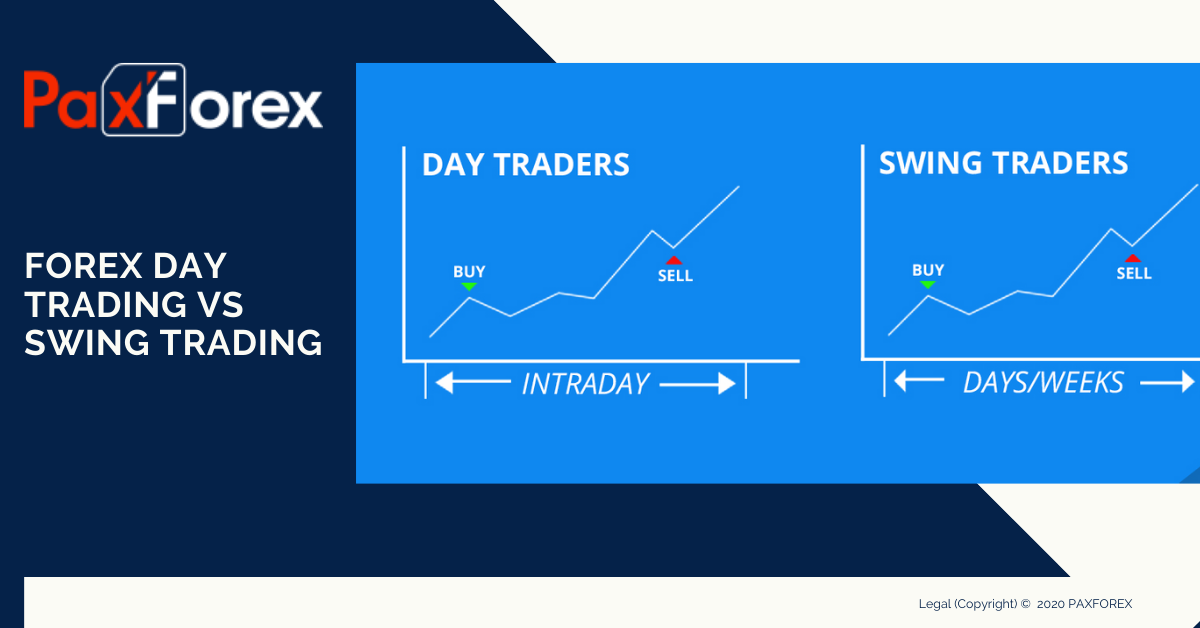
The time frame on which a trader opts to trade is an important decision. Day traders open and close multiple positions within a single day, while swing traders take trades that last multiple days, weeks or even months. They are different trading styles and will suit different people depending on capital available, time availability, psychology and also which market is being traded. Between day trading and swing trading, one style isn't better than another. It is just preference, and which style suits the trader's personal circumstance.
Day traders typically enter and exit trades in the same trading day with interest on quick bite sized profits and numerous trades per day. They are not necessarily trading the entire day, instead they are just interested in getting profit here and there during different hours of different sessions. They look for their setup patterns on the smaller time frame charts (1M, 5M, 15M, 30M or H1), with perhaps confirmation from larger time frames charts (H4 and D1). In terms of money management, they generally have smaller profit targets and stop losses, and thus can afford to trade with larger lot sizes.
Since a day trader places many more trades than a swing trader would, he incurs higher fixed costs in the form of spreads for every trade he places. He must make sure that the currency pair that he trades has a very tight spread so as to increase his chances of profit for each trade. The quality of fills is extremely important to a day trader because he can’t afford to suffer any slippage. Day traders close all their trades by the end of the day and do not carry them over thus eliminating the overnight risk that inherent in swing trading.
Swing trades take place over periods of days, weeks, and even months. As a result, swing trading is, for many, a perfect part-time investment. If you want to keep your day job and trade on the side, swing trading will suit you better than day trading. Since swing trading is rarely a full-time activity, burnout is uncommon. Swing traders usually have full-time jobs and a regular source of income with which they offset trading losses. Swing trading is for traders who prefer to use fundamental or technical analysis to pinpoint longer-term trading opportunities.
Unlike intraday traders, swing traders look to make a large number of pips and typically employ larger stop-losses in order to catch the main swings in the values of currencies. For those who are able to spot the start of a trend, this can be a highly rewarding and profitable style of trading, with the potential to move stop-losses as the trade develops. Also unlike intraday traders, swing traders will often wait for confirmation that the swing is over before exiting in an attempt to trade the entire swing and increase the likelihood of maximizing pips.







